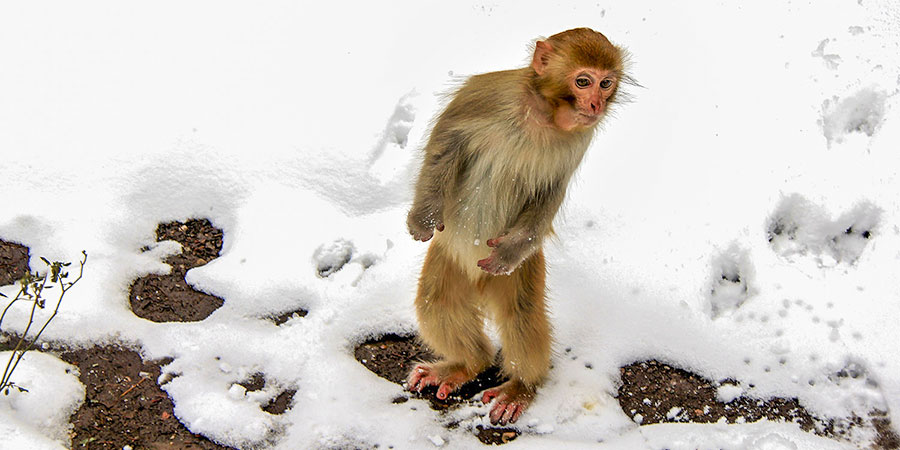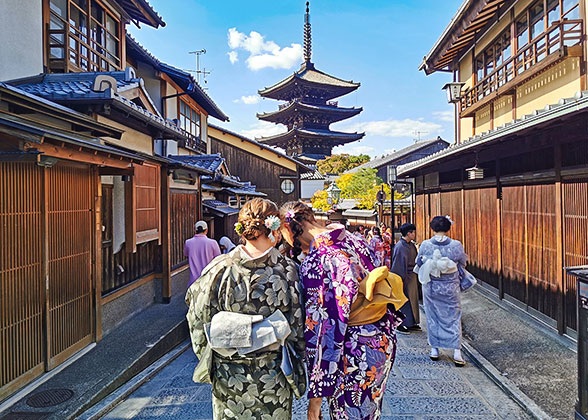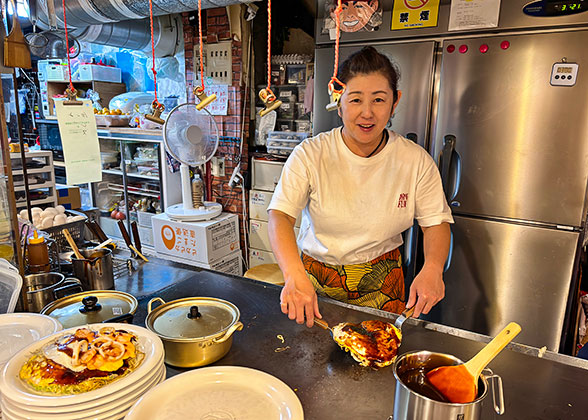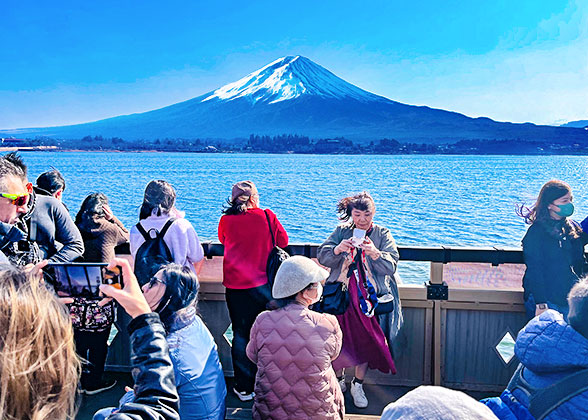Jigokudani Snow Monkey Park
Jigokudani Snow Monkey Park- Japanese transliterated as Jigokudani Yaen Koen, is located in the Valley of Yokoyu River at the foot of Shiga Kogen in northeastern Nagano. “Jigokudani” literally means “Hell Valley” because of its sheer cliffs and gushing hot water. But the “hell” is now the “paradise” for snow monkeys.Snow monkeys migrated here because of the destruction of the surrounding forests and were once hunted for destroying farmland. Since the establishment of Jigokudani Snow Monkey Park in 1964, it has become a nature reserve without fences and cages, not only protecting snow monkeys but also providing a chance for people to observe them closely. It is especially famous among tourists for the unique scene of snow monkeys bathing in hot springs.

Jigokudani Snow Monkey Park
|
Highlight: Snow Monkeys Bathe in Hot Springs
How Did Snow Monkeys Start to Bathe in Hot Springs?
There are two voices about snow monkeys’ first try at hot springs. One said that they observed humans bathing in outdoor hot springs and soon imitated them. The other said that a little monkey reached out to grab an apple that had fallen into a hot spring but found it felt good, so he jumped into the pool, which other monkeys soon followed. Whatever, snow monkeys here are the only known group of monkeys in the world that bathe in hot springs.Why Do Snow Monkeys Like to Do So?
As humans enjoy soaking in warm water to relax, so do snow monkeys. Pregnant snow monkeys go to hot springs more often than others, perhaps to soothe their bodies during such uncomfortable times. Although snow monkeys’ fur is thick enough to withstand cold, soaking in hot springs is more comfortable, and when the weather gets pleasing, they rarely bathe. So the best time to see bathing monkeys is from December to March in cold winter.Notices When Watching Snow Monkeys
Keep a Distance of 1-2 meters.No Touching, No Threatening, No Staring in Their Eyes.
No Feeding.
Photography and video shooting are permitted.
No special filming equipment like drones or selfie sticks.
Keep cameras and phones away from monkeys.
 Tip: Due to the excessive number of visitors in winter, it is crowded around the hot spring. Please be careful not to push each other and fall.
Tip: Due to the excessive number of visitors in winter, it is crowded around the hot spring. Please be careful not to push each other and fall.Suggested Clothing to Wear
We advise you to choose a thicker winter coat, like down garments, since the snow weather is frequent and the daytime temperature drops below 0℃ (32℉) from late December, with the lowest being -10 to -15℃ (5-14℉). Please wear snow boots and ice cleats to prevent falling because there is an about 1.6-kilometer-long (1 mile) path from the entrance to the hot spring, which is slippery after snow. Tip: The Info & Gift Shop at the entrance is available to rent winter coats and snow boots. It costs JPY 500 for winter coat per piece and JPY 800 for snow boots per pair.
Tip: The Info & Gift Shop at the entrance is available to rent winter coats and snow boots. It costs JPY 500 for winter coat per piece and JPY 800 for snow boots per pair.What Else to Do in Snow Monkey Park
On the path through the forest, you will see signs introducing snow monkeys’ group status, behaviors, and how they bring up baby monkeys. You can pay attention to the shape and function of their rear feet with unique monkey characteristics. Japanese macaques are highly socialized, living in a collective “Monkey Group,” their biological and socialized behaviors await you to discover.Tips
Tourists are not allowed to eat or drink in the park for fear of snow monkeys grabbing the food. But you can enjoy local delicacies in a café at the entrance before entering or after visiting. The cute “monkey marshmallow latte” is not available anywhere else.Opening Time
April - October: 8:30 am to 5:00 pmNovember - March: 9:00 am to 4:00 pm
 Tips: 1. Time may change without warning, depending on the weather.
Tips: 1. Time may change without warning, depending on the weather.2. It is impossible to control when snow monkeys will come. They are more likely to go down the mountain when staff put out food at noon, usually from 10:30 am to 2:30 pm.
Admission Fee
Aged 18 and over: JPY 800Aged 6-17: JPY400
How to Get to Snow Monkey Park
Step 1: Take the Shinkansen to Nagano Station.Step 2: Select any route to the Snow Monkey Park Bus Stop.
a. Take the Nagaden Shiga Kogen Express Bus from Nagano Sta. East Exit: 42 minutes; JPY1,800.
b. Take the Nagano-Dentetsu Line Limited Express to Yudanaka Station, taking 38 minutes and JPY1,190; then transfer to the Kanbayashi Line bound for Snow Monkey Park, taking 15 minutes more and JPY310.
Step 3: Walk from the bus stop to the park center where snow monkeys bathe, usually taking 35 minutes in winter and 25 minutes in other seasons.




